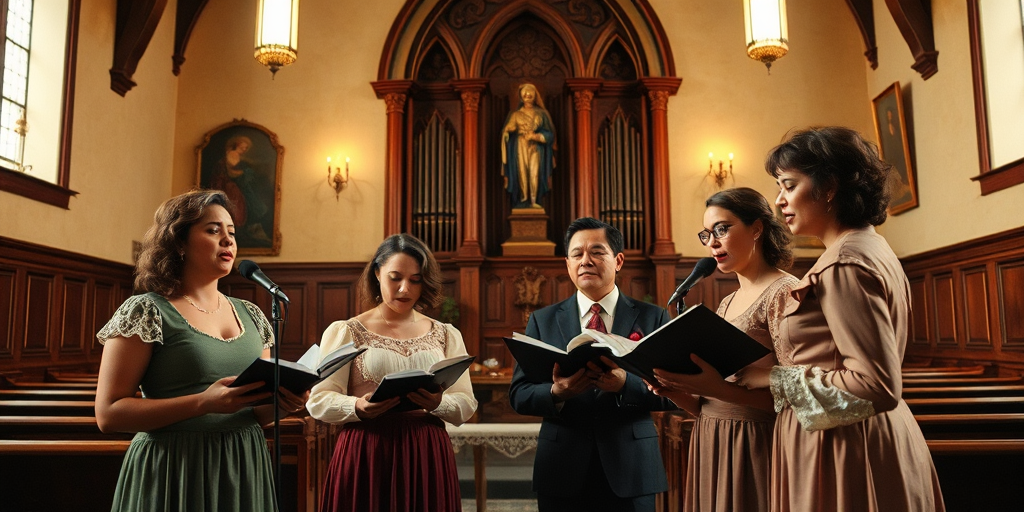Have you ever wondered if the soulful echoes of gospel quartets still reverberate in today’s modern worship music? We’re diving deep into an inspiring journey from sacred vocal harmonies born in turbulent historical times to the uplifting anthems we cherish in contemporary gatherings. Let’s explore how time-honored musical techniques and vibrant storytelling have shaped modern worship, blending heritage with innovation. Join us as we unravel the powerful connections between gospel quartets and today’s transformative worship experiences.
Musical Elements and Arrangements: How Gospel Quartets Shaped Vocal Techniques
Gospel quartets developed distinctive musical arrangements that remain central to modern worship. Their unique blend of vocal expression showcased techniques that established a deep spiritual connection. These ensembles relied on features that exemplified a faith-driven approach to music. Their signature elements include dynamic exchanges and expressive vocal layering.
- Call-and-response patterns that unite individual voices in celebration
- Layered harmonies creating rich, resonant textures
- Improvisational passages allowing spontaneous expression
- Dynamic modulation that enhances emotional delivery
- Precise harmonizing methods ensuring clarity and unity
Modern worship artists have embraced these historical techniques, transforming them to suit contemporary praise environments. The call-and-response patterns and layered harmonies pioneered by gospel quartets are evident in today’s spiritual chorus arrangement development. Today’s musicians build upon these traditions by integrating dynamic modulation and refined vocal precision into their performances. This stylistic evolution results in a worship sound that honors its heritage while continuously adapting to new creative trends. The ongoing influence of gospel quartets is clear in the transformation of sacred melodies into a modern canticle vocal adaptation that inspires and uplifts congregations.
Case Studies and Influential Figures: Inspirational Stories of Gospel Quartet Impact on Modern Worship

We recognize landmark gospel quartets for their pioneering vocal techniques and narrative storytelling that have shaped sacred music traditions. Early groups demonstrated innovative choral arrangement methods, call-and-response dynamics, and heartfelt lyricism rooted in scriptural themes. Their performances established a framework of musical discipline and authentic expression that resonated with communities facing adversity. Their legacy of melodic artistry continues to inspire modern worship, evidenced by the clear and enduring influence on the vocal techniques and arrangement styles of today’s devotional music.
Modern worship artists have built upon these traditions by reimagining historic melodic motifs in a contemporary context. By integrating precise harmonizing methods with innovative recording techniques and digitally enhanced soundscapes, today’s musicians honor the spiritual heritage established by gospel quartets. The evolution is evident in the rich interplay of narrative storytelling and choral arrangement techniques that give modern worship its uplifting quality. The following table provides a quick reference on influential figures who embody this transformation.
| Artist/Group | Notable Contribution | Era/Influence |
|---|---|---|
| The Gospel Harmonizers | Established call-and-response dynamics and tight harmonies | Post-slavery to Mid-1900s |
| The Soul Stirrers | Pioneered narrative lyricism and innovative vocal exchanges | Mid-1900s |
| Hillsong United | Integrated quartet harmonies into global worship practices | 2000s |
| Elevation Worship | Reimagined historic vocal motifs with modern production | 2010s |
Final Words
In the action of tracing the journey from sacred quartet origins to modern worship evolution, we’ve explored historical roots, intricate musical elements, and dynamic transitions in style.
Our analysis incorporated key points and case studies that unite tradition with today’s vibrant worship practices.
We see clearly how passion and legacy have molded today’s anthems, enriching our shared musical experience.
Together, our insights affirm the enduring impact and authenticity of How Gospel Quartets Inspired Modern Worship Music, inviting us to continue this transformative journey.
FAQ
Q: How did gospel quartets influence modern worship music?
A: Gospel quartets shaped modern worship music through their rich harmonies, call-and-response patterns, and emotional delivery. Their influence can be seen in contemporary praise arrangements, vocal techniques, and congregational singing styles.
Q: What are the main characteristics of gospel quartet music?
A: Gospel quartets feature four-part harmonies, spiritual lyrics, improvised vocals, and dynamic musical arrangements. They emphasize powerful lead vocals supported by tight background harmonies and often incorporate traditional hymns.
Q: Who were some influential gospel quartets that shaped modern worship?
A: The Golden Gate Quartet, The Swan Silvertones, and The Dixie Hummingbirds pioneered techniques still used today. Their innovative harmonies and spiritual expressions revolutionized sacred music performance.
Q: How do gospel quartets differ from modern worship bands?
A: Gospel quartets focus primarily on a cappella or minimal instrumental accompaniment with complex vocal harmonies. Modern worship bands typically feature full instrumentation with simpler vocal arrangements.
Q: What vocal techniques originated from gospel quartets?
A: Gospel quartets introduced melismatic singing, tight harmony stacking, vocal runs, and improvised adlibs. These techniques remain fundamental in contemporary worship music performance.
Q: How has gospel quartet music evolved over time?
A: Gospel quartet music evolved from traditional spirituals to incorporate blues, jazz, and R&B elements. Modern interpretations blend these classical styles with contemporary production techniques and arrangements.
Q: What role did gospel quartets play in church music?
A: Gospel quartets served as worship leaders, musical innovators, and spiritual storytellers. They helped preserve sacred songs while developing new ways to express faith through harmony.
